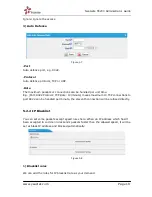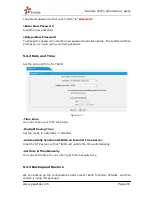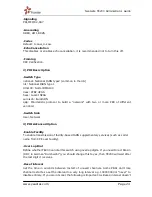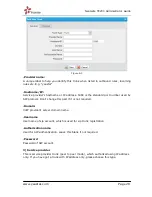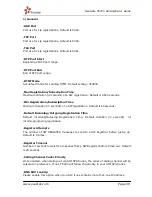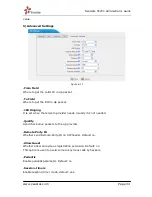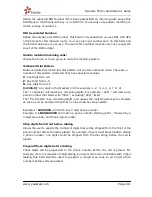
NeoGate TE200 Administrator Guide
www.yeastar.com Page 32
If an external host has been supplied, you may specify how often the system will perform
a DNS query on this host. This value is specified in seconds.
·
Local Network Identification
Used to identify the local network using a network number/subnet mask pair when the
system is behind a NAT or firewall.
Some examples of this are as follows:
"192.168.0.0/255.255.0.0": All RFC 1918 addresses are local networks;
"10.0.0.0/255.0.0.0": Also RFC1918;
"172.16.0.0/12": AnotherRFC1918withCIDRnotation;
"169.254.0.0/255.255.0.0": Zero conf local network.
Please refer to RFC1918 for more information.
·
NAT Mode
Global NAT configuration for the system. The options for this setting are as follows:
Yes = Use NAT. Ignore address information in the SIP/SDP headers and reply to the
sender's IP address/port.
No = Use NAT mode only according to RFC3581.
Never = Never attempt NAT mode or RFC3581 support.
Route = Use NAT but do not include report in headers.
·
Allow RTP Reinvite
By default, the system will route media steams from SIP endpoints through itself.
Enabling this option causes the system to attempt to negotiate the endpoints to route
packets to each other directly, bypassing the system. It is not always possible for the
system to negotiate endpoint-to-endpoint media routing.
3) Codecs
Figure 6-9
A codec is a compression or decompression algorithm that used in the transmission
of voice packets over a network or the Internet.
u-law:
A PSTN standard codec, used in North America, which provides very good

